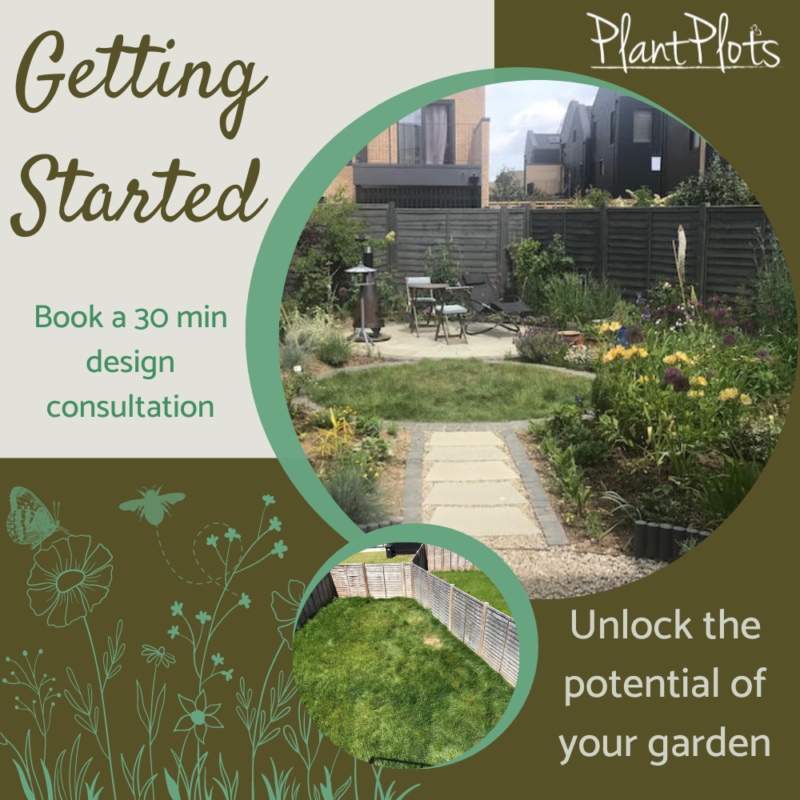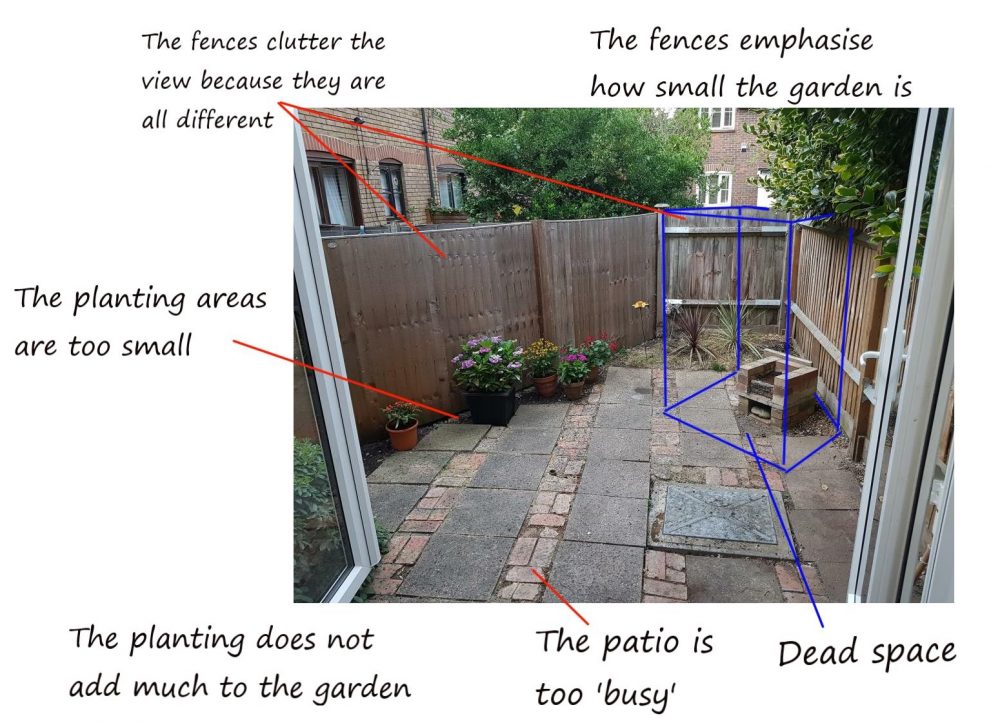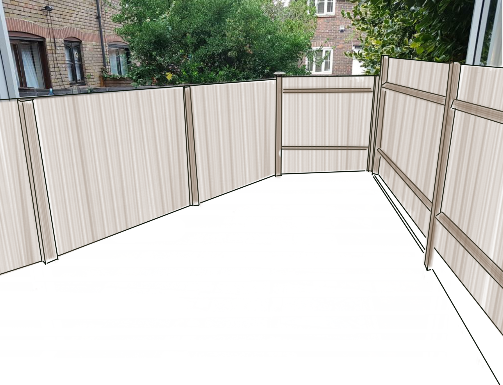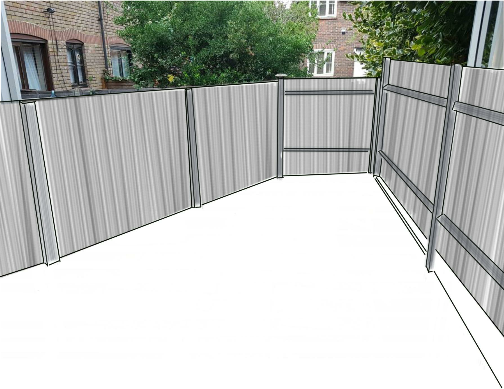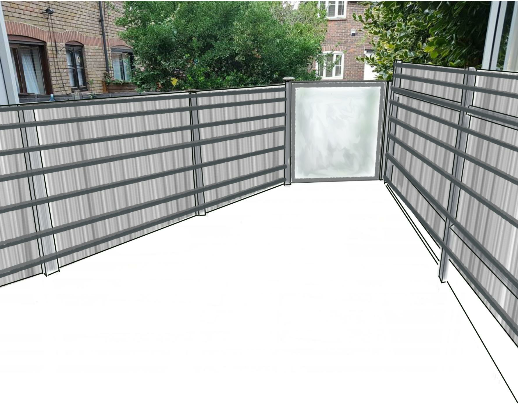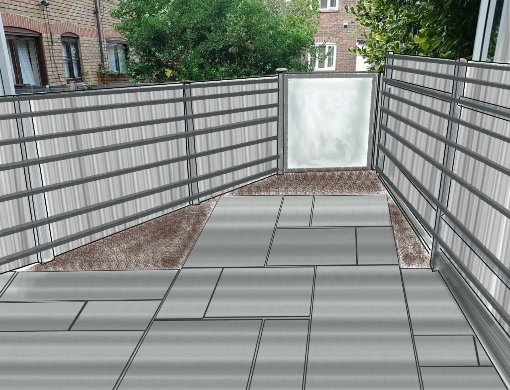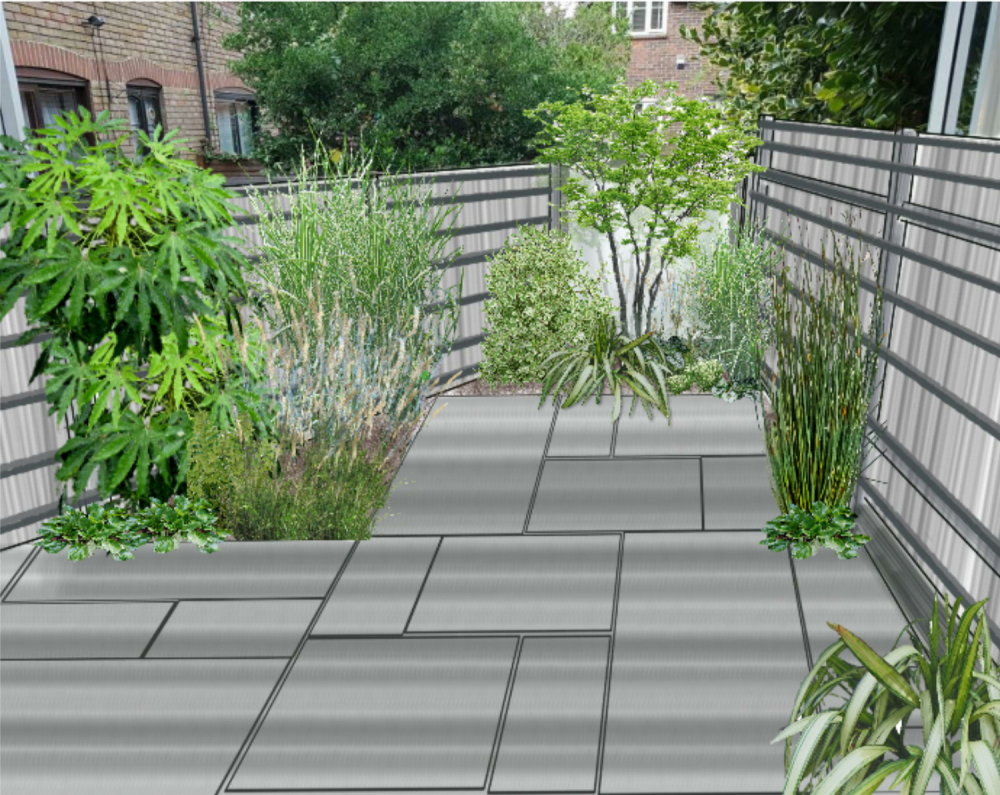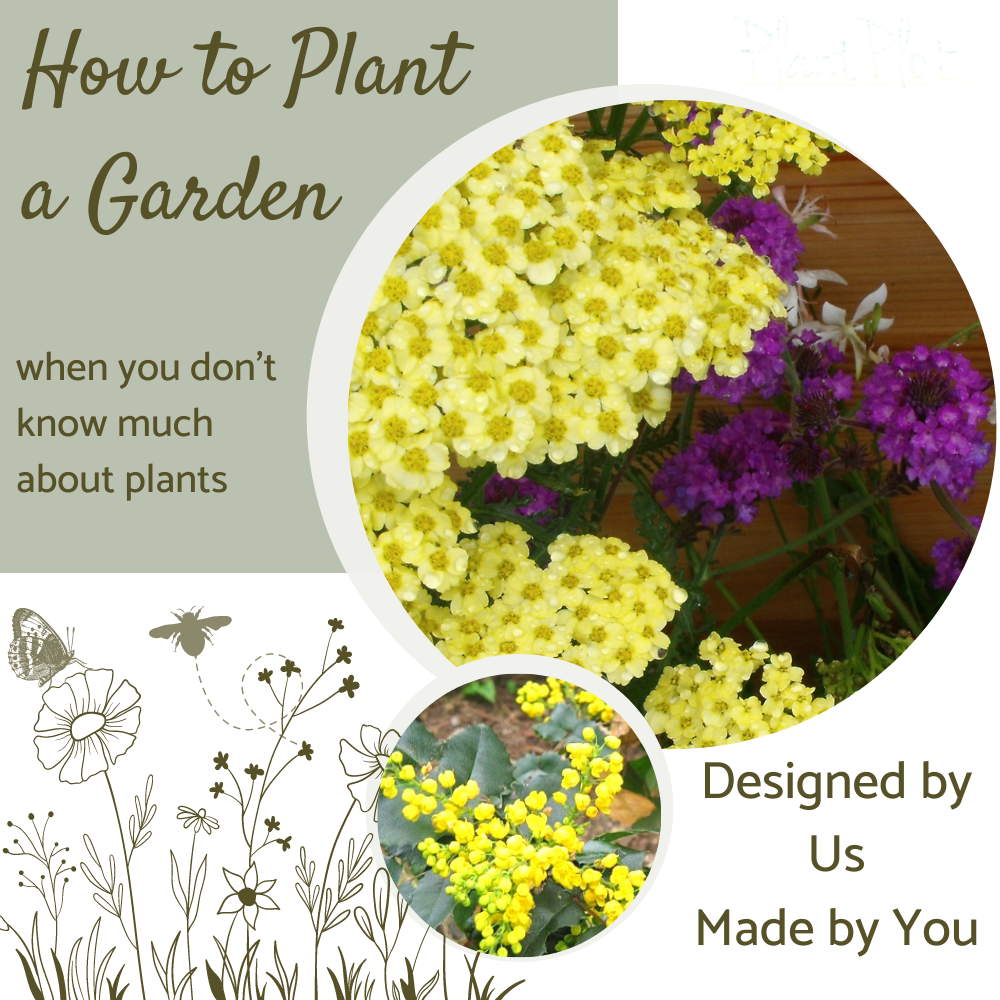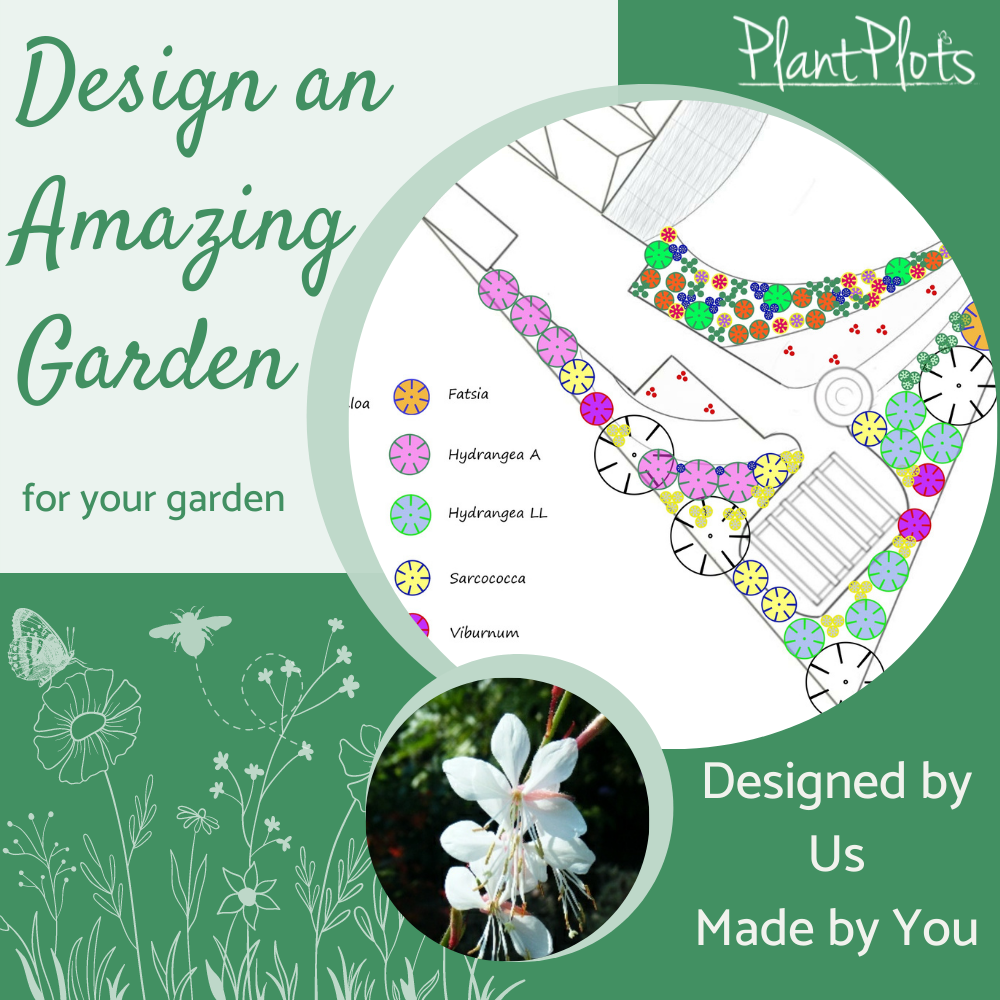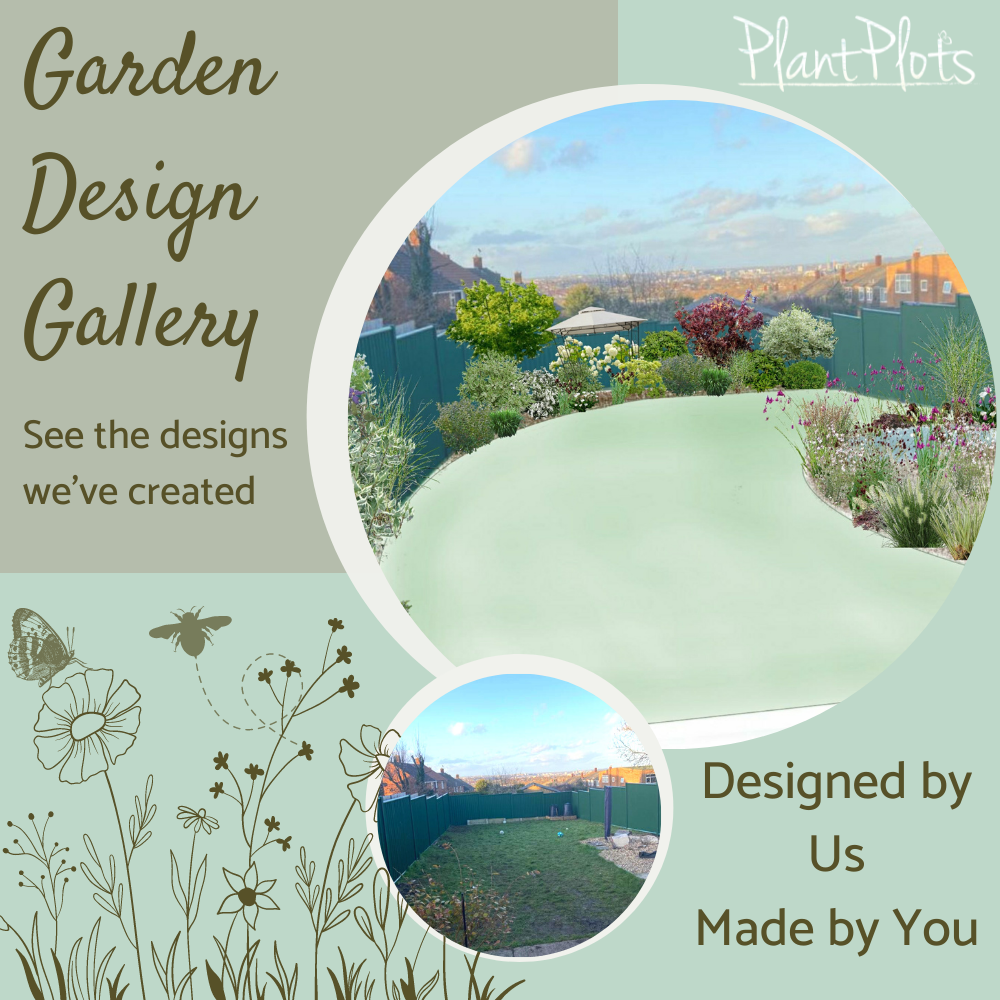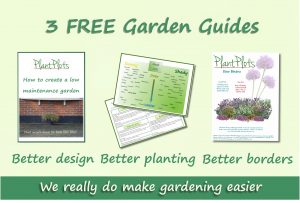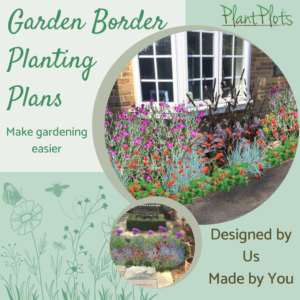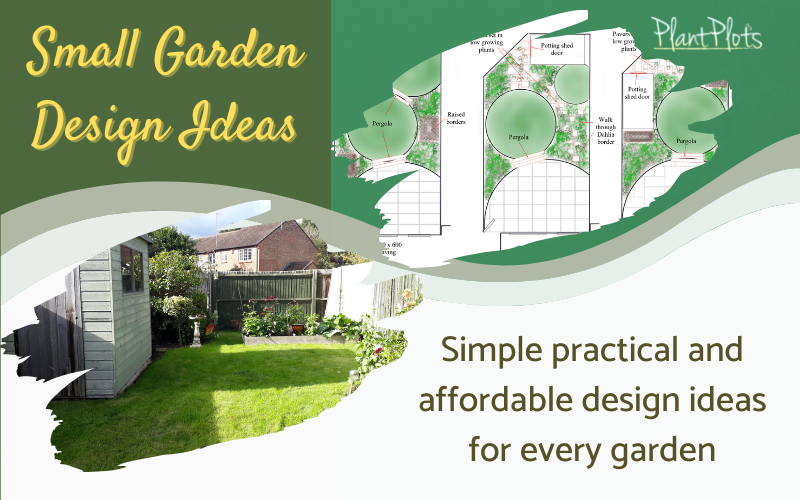
Small garden design
Gardens are really good for us, helping reduce stress, relax, watch wildlife and soak up the sunshine. However many small gardens don’t live up to the dreams of their owners. The key problem is one of fitting everything in, without it looking cluttered, squashed or muddled. It is just harder to hide ugly sheds, storage units or any ugly views because they are more visually prominent in a small garden. So we’ll help you understand the simple design principles to apply to any small garden design or courtyard space. If you still need some advice, we offer a virtual service to help sort out the design issues in your garden
The most important design principle to understand first is Dead Space.
use the buttons below to scroll to section you want or watch our design videos
What is Dead Space?
It is easy for any small garden design to lose the battle between usable space and dead space.
Avoid creating dead space.
Dead space is space you can’t use; the area under a table is dead space. Dead space is also very visible and will emphasise the lack of space. So to make a garden feel bigger, the first step is to work out where any dead space is and minimise it! 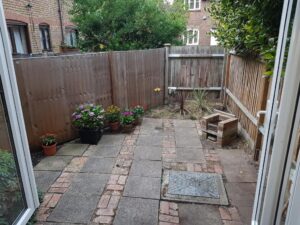
In the courtyard garden image shown, the area around the little brick BBQ has to be kept clear of the flames, this can’t be used for anything else; it is dead space. This volume of unusable space can easily begin to use up a significant portion of any small garden unless you plan for it
Garden sizes have been shrinking for decades, the average size of a typical garden in London is a little over ½ the size of a tennis court. The rest of the UK fares a little better but is still on average only 12x16m in size. How you design this small space is key to making the most of the garden.
The best way to minimise dead space is to think about the area and the features you need in the garden in 3 dimensions. It’s a bit like 3D Tetris, you need to box together those features in such a way as to minimise any gaps – the gaps constitute dead space.
If it all fits together neatly, you will pack more into the garden and it will be the most efficient use of space.
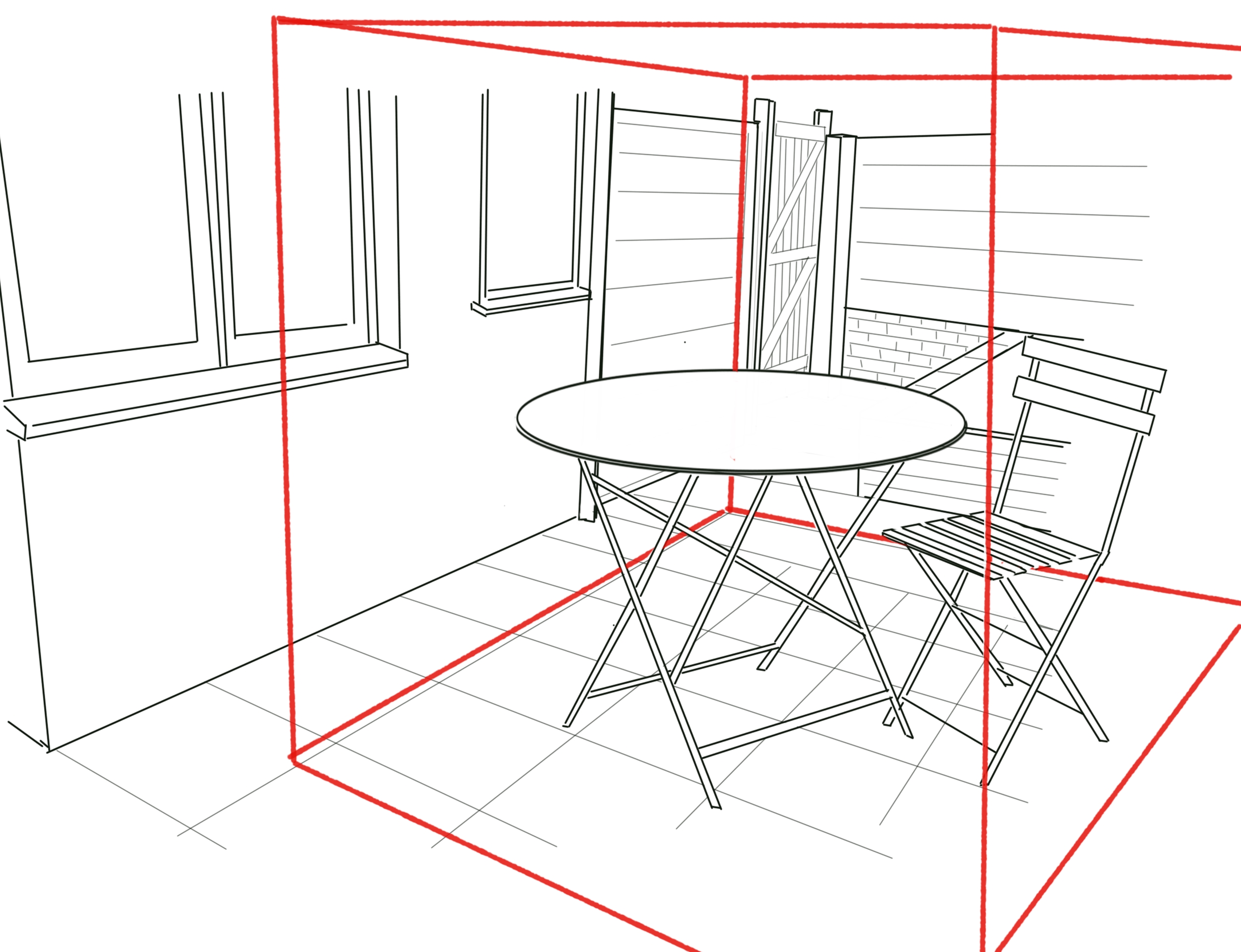
How to Make a Garden Feel Bigger
Making a garden feel bigger is all about deceiving your senses – all 5 of them!
The problem with this small garden is that all your attention is drawn to the fences which only highlights how small the space is.
Making the fences more attractive is the first step – painting them a dark colour helps.
So why has the garden been created like this?
Start with the fences, it is impossible to hide all the fences. Instead, you need to control the view of the fencing. In this case, adding a mirror as a feature draws your attention to where you want people to look. Then the fence line is broken up with plants that grow taller than the fence.
The planted area is sited to provide privacy from the overlooking windows.
Keep to a darker single colour palette for the hard landscaping (dark grey paving and a similar colour for the fencing). Darker colours are less noticeable behind the different shades of green leaves.
Use a limited colour palette for the plants. You want to be able to lose yourself in a ‘sea of greenery’ (even if it is only a little sea!). Your attention will focus on the different greens, leaf shapes and the plants moving; which means the fencing, neighbours and the small size become less noticeable.
Lastly, which can’t be captured in a picture – used scented plants. If you sit in any garden with your eyes closed surrounded by wonderful perfume – who cares how small it is!
Urban or City Gardens
More and more families are living in cities so what do you need to consider when you want to design an urban garden?
Aside from the garden being quite small often the main garden feature is everyone else! Looking out of the window or back door reveals a view consisting mainly of other buildings and fences. How do you create a garden that feels like you are in your own little oasis when all around you are windows and walls?
It’s all about tricking the eye and activating your senses.
The more your garden holds your interest through sight, touch, sound and smell – not forgetting taste…. the less interest you have in the world outside.
You want to maximise the available space you have, but also include attractive-looking plants that provide some privacy. The best shape plants to choose from are tall but skinny plants.
Here are some tips:
- Avoid anything spiky (no matter how ‘architectural’ it may look) in pots or in your borders; no one likes being impaled!
- Keep to a simple design and avoid irregularly shaped borders.
- It is better to have 1 large impressive border in a small garden than lots of narrow or small borders.
Light or Privacy?
This is always the paradox with small urban gardens, to create a more private space, you need to plant tall – this however cuts down the available sunshine and increases the amount of shade. You need to decide what is more important for you.
If you choose privacy, then you can create a tall oasis of ‘jungle’ plants. Use lots of different foliage shapes and textures and only use 1 or 2 flower colours (with one being white).
If you prefer to maximise the available light, then you have more of a choice with the planting styles, bold and bright colours will capture your attention more than a pastel palette holding your vision inside your garden.
However, choose plants that will move in a breeze and also those with plenty of scents. Our eyes are conditioned to notice movement, as such swaying plants are more interesting to look at than boring shrubs. Secondly, as you are enclosed, the perfume from scented plants will stay in your garden for longer, so you can enjoy it more!
Lawns/Patios/Paths:
We all love a lawn, but when looking to design an urban garden, you really need to ask whether you can grow a good lawn.
- How well does the ground drain?
- Do surrounding buildings cut out the sunshine?
- Will you always walk on the same small piece of grass?
If there are issues with poor drainage, low light levels or heavy use; don’t have a lawn.
Lawns need sunshine to grow lush and thick. The smaller the lawn, the greater the proportionate wear and tear, so you quickly develop muddy patches and threadbare bits. Plus, you need a mower and sheds take up a lot of space in a small garden.
Paths and Patios must be low maintenance, so choose the right medium for the right place.
- In shady spots, you will get green algae growing, which is slippery and ankle-breakingly slippery on decking.
- Light-coloured paving will go green too in the shade.
- Decorative stone paths (not pea shingles) are impossibly difficult to rake clear of leaves.
- Pine needles are even worse to try to rake or remove, so have an easy-to-sweep path or patio if you get needle drop.
- Decorative concrete setts/block paving has lots of joins – meaning lots of places for seeds to germinate, so putting an ornamental grasses garden upwind of your patio…you know you will have work to do!
Messy Trees & Untidy Plants:
If you read lots of garden magazines you will get lots of tips for plants and trees for small gardens, many will advocate the virtues of fruit-bearing trees as these trees have ‘something going on’ all year round and that is great.
But no one shows you the picture of the red or purple bird poop droppings everywhere or the rotten fruit that has fallen on the ground attracting wasps nor do they mention that the fruit drop stains the patio.
We think these things are actually important, the boss’ garden at home is surrounded by birch trees – ‘ooh how wonderful’, according to garden design books.
Birch trees cast a light-dappled shade, are not too overpowering, and have pretty bark but also drop thousands of leaves, bucket loads of the tiniest seeds that invariably blow into your wine glass as well as dropping armfuls of twiggy branches – ALL YEAR!
Here are our top plant design tips for small urban gardens!
- ‘Good for Naturalising’ plants are not good in a small urban garden.
- ‘Vigorous’ – is a word to avoid on any plant label.
- Spreads via underground roots/suckers – maybe only plant this in a large sturdy pot.
- ‘Self Seeds’ you have a choice, don’t buy it or cut the seed-heads off before they are ripe.
- Evergreen – this is good!
- Scented…this is good too
- Avoid anything prickly – it will be a pain in the proverbials
- Climbers, these can easily become a tangled mess. Climbers will grow toward the light, so if your garden is quite shady, you will eventually only see the woody stems as the plant heads up to the sunshine and flowers above your head.
Designing a really Tiny Space or Courtyard Garden
Making the most of the space
Most articles about garden design will show you pictures of wonderful gardens that are either very large or very expensive. This does not help if the garden you have, is tiny and the budgets are more realistic. So, I decided to research the internet to see what help and advice there was for designing a tiny garden, and this is what I found: Sadly it isn’t much help either!
- ‘Have a Plan’
- ‘Sensible Seating’
- ‘Create a Sensory Experience’
- ‘Plant in Layers’
- ‘Pick the Right Plants’
- ‘Get the Design Right’
- ‘Be Adaptable’
- ‘Divide into Zones’
- ‘Think Vertically’
So would you now know how to maximise space in a small garden?
Although I do agree with the advice above, it’s not easy to translate and make relevant to your own garden, it isn’t really usable advice.
In any small garden there will always be parts of any garden you will not want to use. These might be dingy corners or the area beside the bins. It might be somewhere completely overlooked by all the neighbours.
The point is, nothing is going to make you want to use those parts of the garden. So the areas left are the parts of the garden you are physically going to occupy. The unusable parts become the areas you add storage and planting because this will not impinge on the usable parts of the garden. It automatically maximises the space you have available!
How to work out the usable space
There is sadly no magic formula or design software to use, the best tool for a novice gardener is to use a chair. Plonk the chair down in various parts of the garden and decide under what circumstances you would want to sit there. If there aren’t any – what is the reason why not. It may be that space is needed to walk to the bins, hang the washing or it maybe it is a cold and dingy space.
The reason is important because it determines whether that bit of unusable space then has to be kept clear for access. If the spot is just not a good place to be, the next step is deciding what will go there.
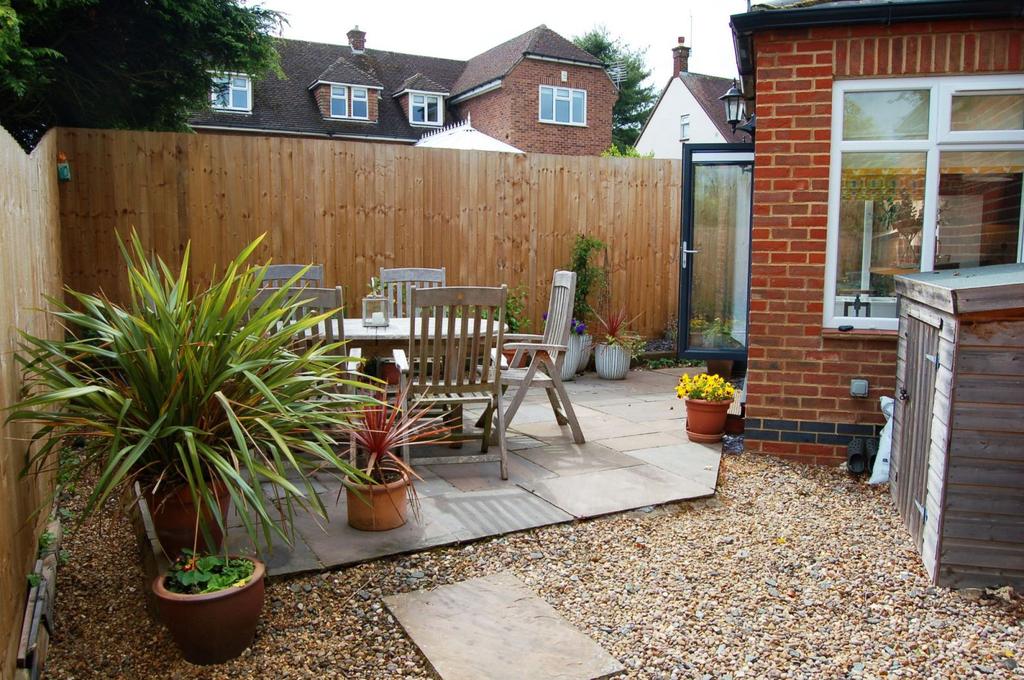
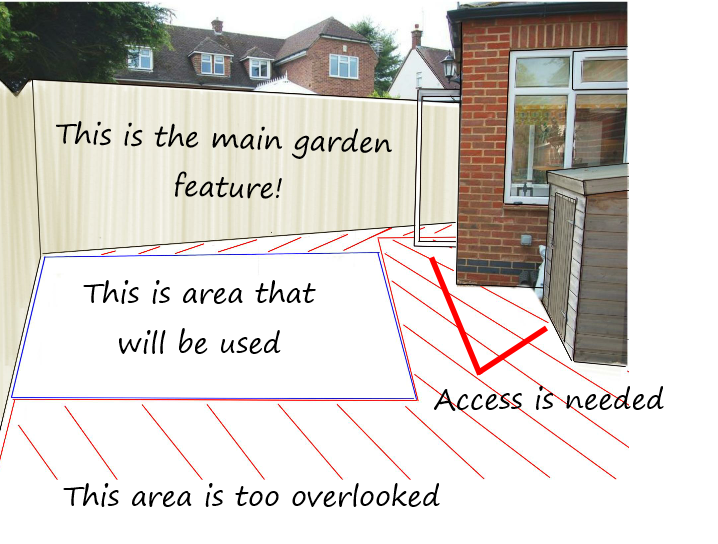
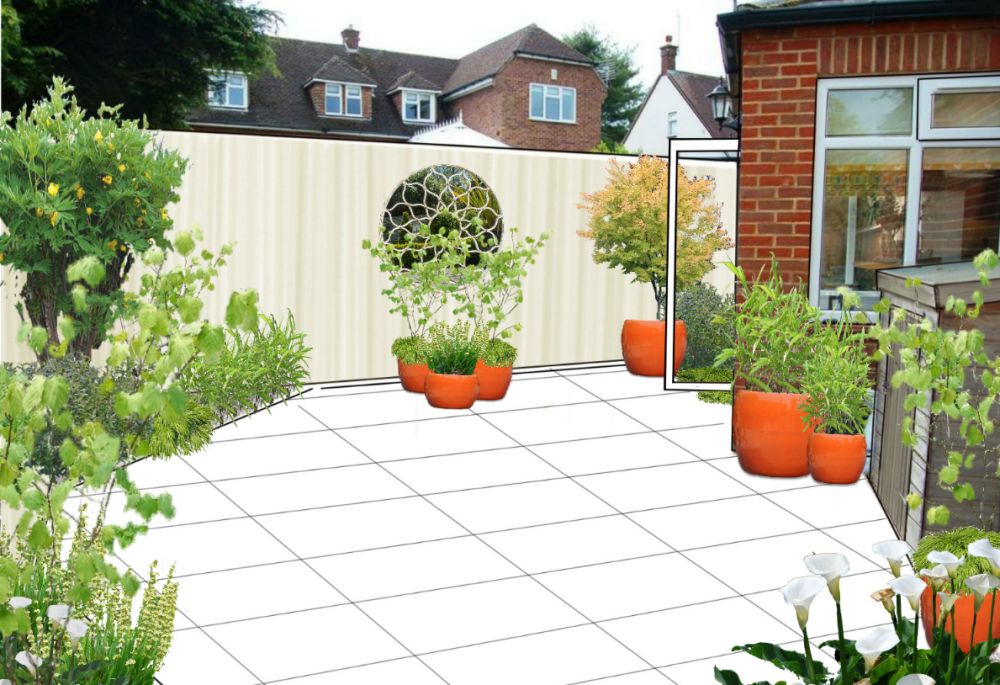
Storage
All gardens however small will need a utility area (even small gardens) places for the bins to go, storing all the ‘stuff’ that goes with having a garden etc. Now logic would dictate keeping the storage small but be mindful that it will fill up easily. Make this area as large as it can possibly be; then look at how it can be disguised, made more beautiful or how to distract your attention from it; see how to hide an ugly shed.
Ideally, the shed should go in the area the plants would struggle to grow most. That then leaves the remaining unusable areas available for planting.
Planting
Small gardens don’t need small plants just smarter planting. There are a few rules to consider:
- Start at eye level and work down
- Think of the job a plant needs to do – and then search for the plant that does that the best
- Make the most of your senses – all 5 of them!
- Check the Size in 5!
Start at eye-level:
Sit in the chair and look around the garden. Most of what you initially look at is right in front of you, and is most likely the fences or boundaries. These have to be made more attractive to look at. Simply covering these with a large climber is not the answer; you need to be more creative. Regard the fence in the same way you would a wall in the house. What could be added to make it look more interesting and attractive feature?
What does the plant need to do?
Plants grow well if they are planted in the right environment; they will be healthier and grow as nature intended and at a natural speed. The plant will look after itself; meaning you don’t have to!
Choosing plants then involves matching how they want to grow with the place you have to grow them – these two environments should be the same!
But there are always lots of plants to choose from, so the next step is to narrow down what you need the plant to do.
Start by being more pragmatic, what do you need the plant to do? Provide year-round privacy, is it the main ‘look at me’ feature of the garden? What shape does it need to occupy; tall or skinny? Does it need to be soft and floaty because you will walk past it, and perhaps run your hands over it as you do? So would it be even better if when you did, the plant released a lovely scent?
Using your senses
Far too much emphasis is often placed on how a garden looks during the design process. But although important, if the garden only looked lovely, whenever you shut your eyes it would disappear!
The garden needs to stimulate all your senses, touch, taste, sight sound and smell.
The garden space available is small, as such, all the plants in it have to multitask. A useful exercise is to list what’s needed.
| Area | ‘Environment‘ | Job Description |
| Area by the back door | narrow sunny space, access needed at all times | upright, soft, tactile, scented, drought loving |
| Patch in the SW corner | Best for last rays of sun, sheltered spot, love eating out there | Plants to touch, scented leaves, evening scent, nothing prickly, want to feel enclosed in a world of plants |
| Small bed by the fence | Morning sun, evening shade. Fence is ugly and flimsy, neighbours look in! | Taller self supporting plants. Evergreen ideally, must be pretty to look. Fence can have decoration added, mirror? |
| End fence under tree | Never sit there, area for main planting viewed from the window. Tree drops leaves | Big interesting leaves or leaf colours. Can be deciduous, flowers not so important, flowers in the spring before tree comes into leaf |
Now although this doesn’t give you a list of plants, here is where you use the power of Google! Type in a search phrase and up will pop a site with plants to use. Then you can look at which one fits best.
Check the Size in 5!
Stating the obvious here, but all plants grow, and some grow very fast. The plant doesn’t know it’s misbehaving if it grows off the end of your trellis. So check the size and spread of it after 5 years – before you plant it! Plant labels make even the most thuggish of plants sound tame. Beware the following terms when looking for plants:
- Vigorous
- Fast growing
- Spreads via underground roots
- Self-seeds easily
- Good for ground cover
- Anything over 3m tall
The garden you have is small, the plants don’t need to be small to include them, but they mustn’t be plants that will take over the garden either!
